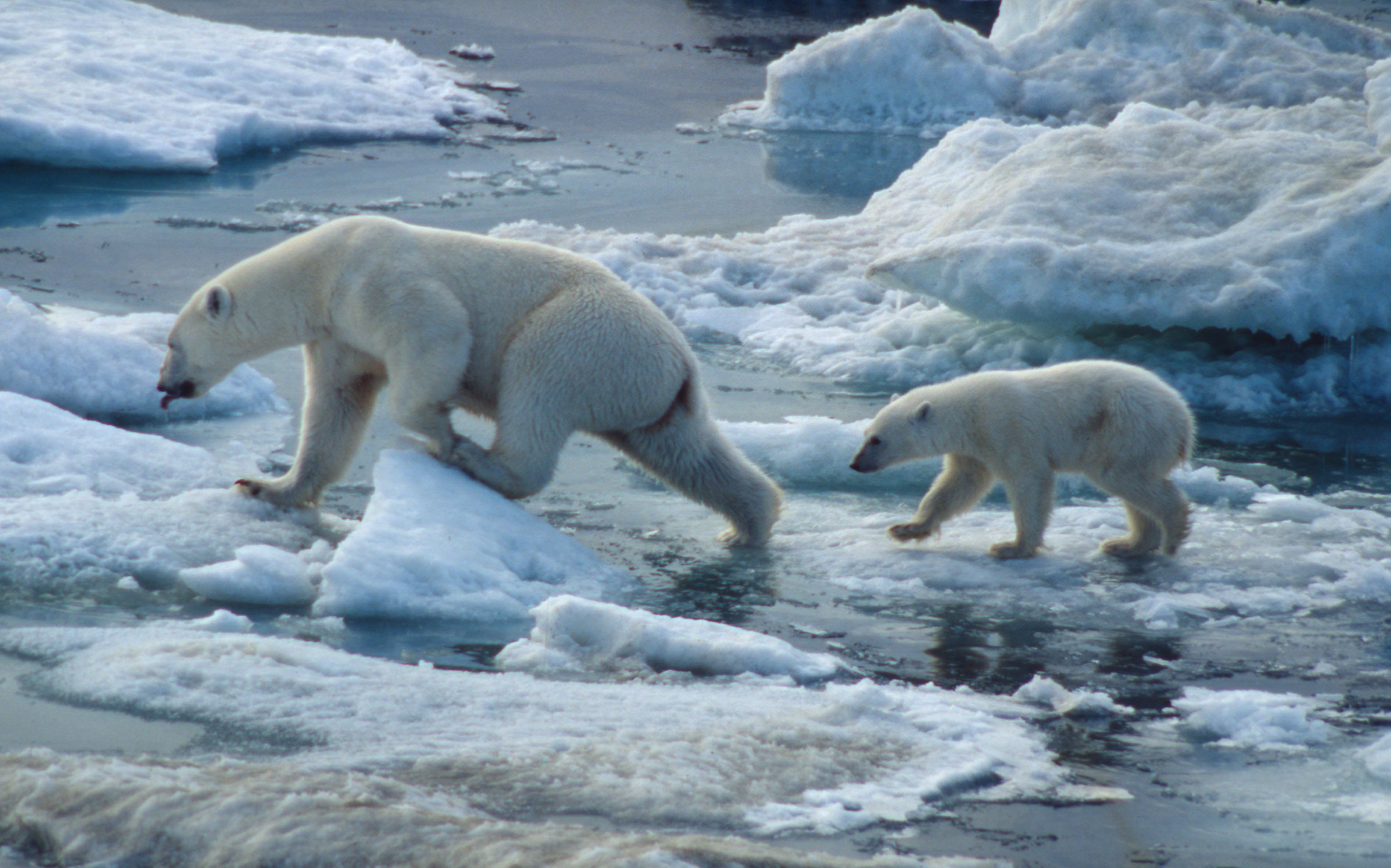Climate Change Forcing Polar Bears to Swim Longer Distances

Biologists are warning that warmer temperatures from climate change are forcing polar bears to swim longer distances to find stable sea ice, which is proving deadly for many of their cubs.
Researchers following a group of adult polar bears found a 45 percent mortality rate among the cubs of those adults that swam 30 miles (48 kilometers) or more at a time, as compared with an 18 percent mortality rate among the cubs of other polar bears. And the rapid loss of sea ice is forcing these longer swims, the scientists said.
"This research is the first analysis to identify a significant multi-year trend of increased long-distance swimming by polar bears," study researcher Geoff York, a World Wildlife Fund polar bear expert, said in a statement. "Prior research had only reported on single incidents." [Gallery: Polar Bears Swimming in the Arctic]
To determine how far polar bears are swimming, researchers collected data from GPS collars placed on 68 adult polar bears in the Arctic Ocean's southern Beaufort and Chukchi Seas between 2004 and 2009. (The bears were all females; the heads of adult males are not as large as their muscular necks, so GPS collars would slip off them.)
Researchers also looked at satellite imagery of sea ice to identify incidences of bears swimming more than 30 miles at a time. Twenty members of the collared polar bear group engaged in such long-distance swims, with scientists identifying 50 marathon swims in all.
The farthest swim recorded during the study was 426 miles (686 km), and the longest-lasting swim took 12.7 days. Long-distance swimming expends large amounts of energy, putting the polar bears at risk of drowning due to fatigue or rough seas, the researchers say.
Eleven of the long-distance swimmers had young cubs at the time, and five of these bear mothers lost their cubs during their long swims.
Sign up for the Live Science daily newsletter now
Get the world’s most fascinating discoveries delivered straight to your inbox.
The researchers said rapid loss of sea ice was forcing polar bears and their cubs to swim longer distances to land or to areas of ice that wouldn't collapse under their weight.
"Climate change is pulling the sea ice out from under polar bears' feet, forcing some to swim longer distances to find food and habitat," York said.
According to the University of Washington Polar Science Center, Arctic sea-ice levels have dropped to record lows in July 2011, with sea ice volume now 47 percent lower than it was in 1979, when satellite records began.
The final report has not yet been released. Researchers were to present the study Tuesday (July 19) in Ottawa at the International Bear Association Conference.
You can follow LiveScience writer Remy Melina on Twitter @remymelina. Follow LiveScience for the latest in science news and discoveries on Twitter @livescience and on Facebook.










